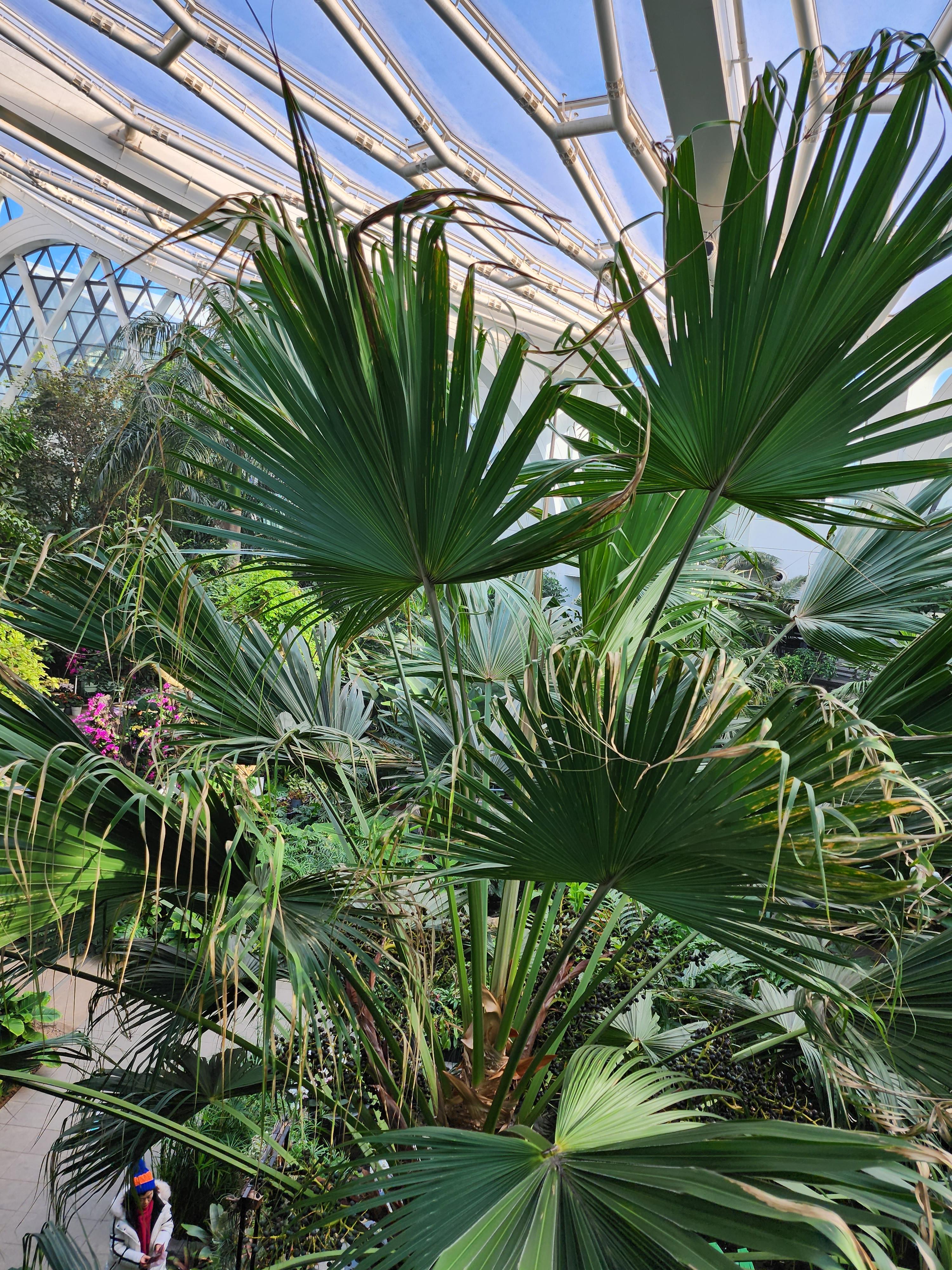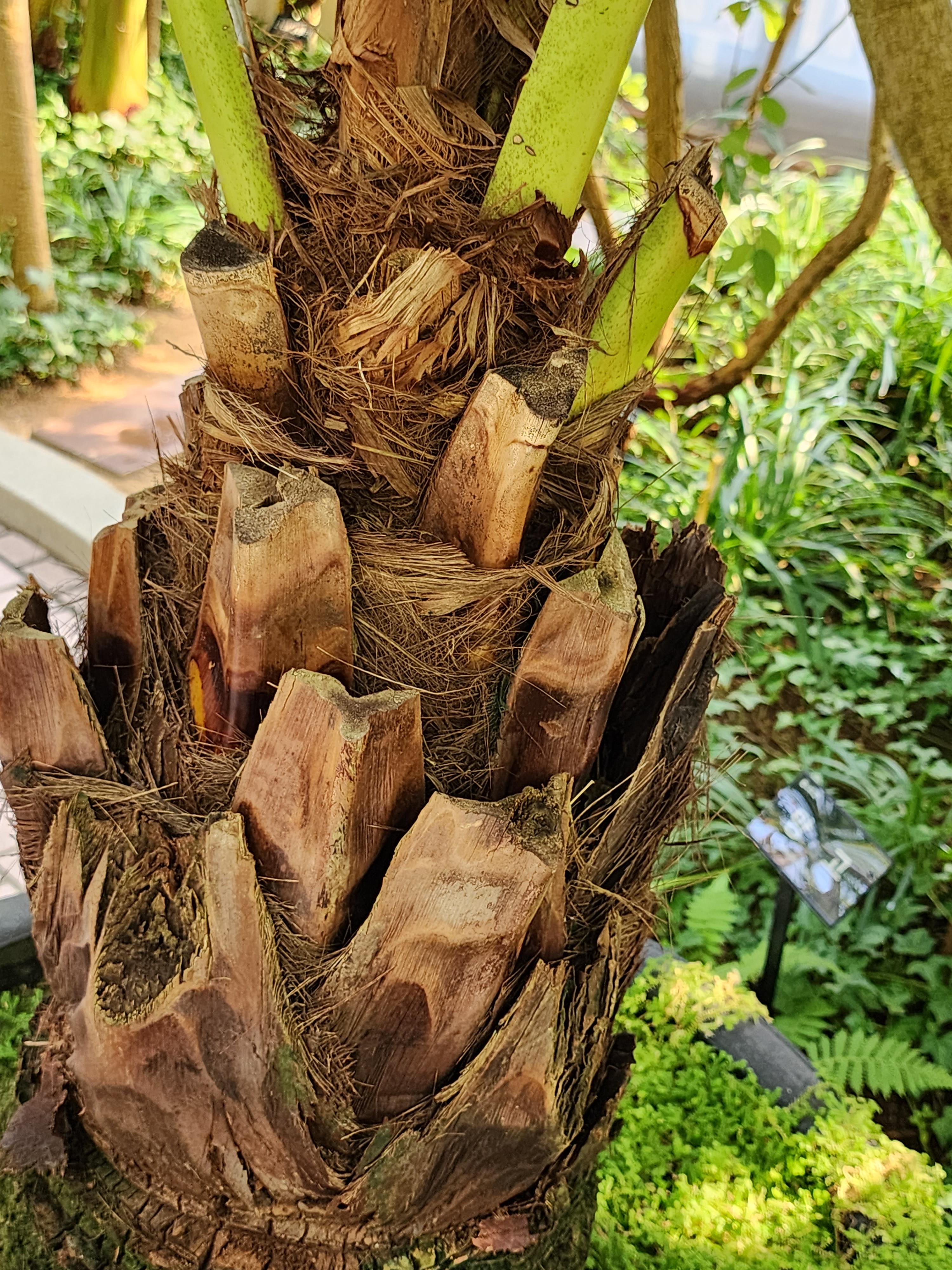참조 사이트
https://www.palmpedia.net/wiki/Livistona_chinensis
학명 : Livistona chinensis (Jacq.) R.Br. ex Mart.
국표식 등재국명 : 중국부채야자
다른 국내 유통명 : 비로야자
(아래 일어명을 보면 비로야자는 일어명에서 유래한 것이고 일어명 '비로우'는 열대 과일 '빈랑'과 혼동한데서 생긴 이름이므로 쓰지 않는 것이 좋겠다)
중국어명 : 蒲葵
ビロウ는 ビンロウ(檳榔)와 혼동한데서 생긴 이름이다,.












엽병의 가시는 아래로 굽는다



엽신은 전체 길의 1/2 이상으로 깊게 50-90개의 열편으로 갈라지고 각 열편은 다시 끝이 2열된다
아래 : 2023.01.26 물향기수목원











잎의 열편은 장상으로 배열되되 우축(costa)에 배열된다



FOC
Livistona chinensis (Jacquin) R. Brown ex Martius, Hist. Nat. Palm. 3: 240. 1838.
蒲葵 pu kui
Latania chinensis Jacquin, Fragm. Bot. 1: 16. 1800; Chamaerops biroo Siebold; Livistona boninensis (Beccari) Nakai; L. chinensis var. boninensis Beccari; L. chinensis var. subglobosa (Hasskarl) Beccari; L. japonica Nakai; L. oliviformis (Hasskarl) Martius; L. sinensis Griffith; L. subglobosa (Hasskarl) Martius; Saribus chinensis (Jacquin) Blume; S. oliviformis Hasskarl; S. subglobosus Hasskarl.
Stems to 15 m tall, 20-30 cm in diam., rough with leaf scars. Leaves palmate; petioles to 1.8 m, with green or black, recurved spines along margins, spines denser proximally, fewer distally on petioles; hastula to 3 cm; blades almost circular in outline, 1.2-1.8 m wide, green on both surfaces, regularly divided to ca. 1/2 their length into 50-90 segments, these split and pendulous at apices. Inflorescences 1-1.2 m, branched to 3 orders, with 6 or 7 partial inflorescences; rachillae 10-18 cm; flowers hermaphroditic, borne in clusters of 4-7, white or yellow, 2-2.5 mm. Fruits green or blue-green, globose to ellipsoid or pear-shaped, 1.5-2.6 × 0.9-1.8 cm.
Coastal forests, often on sandy soils. Guangdong, Hainan, Taiwan [S Japan].
This species is widely planted as an ornamental throughout tropical and subtropical areas of the world.
The leaves are used for making hats, fans, brooms, and raincoats in Guangdong.